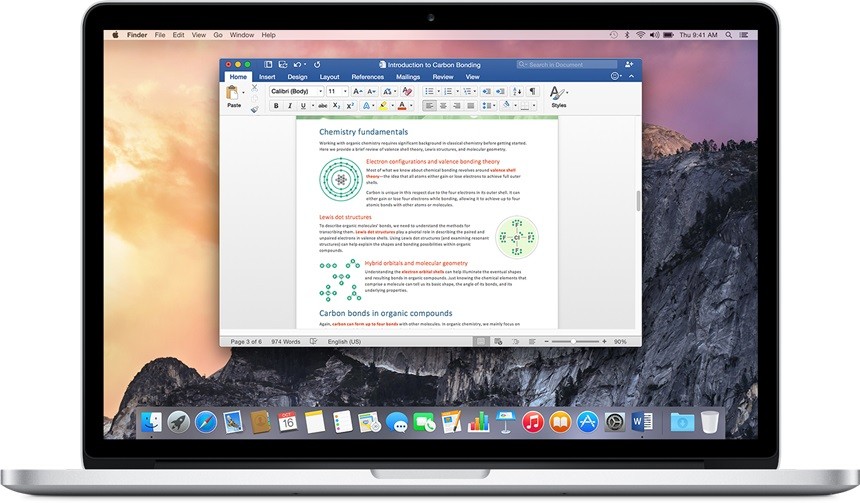Is Office For Mac The Same As Office 2016
Office 2016 For Mac To Be Officially Launched In Summer During the conduction of some tests we found that Office 2016 cannot be quoted to be faster than its late predecessor in the year 2011. Office 2011 users who want to try Office 2016 but are hesitant to rely on it needn’t worry because the two versions of the software can run side by side on the same computer. Office 2016 works with Microsoft’s cloud storage options, letting you access your files on OneDrive, OneDrive for Business, and SharePoint.
Mac users have always been an important market for Microsoft, especially in the early days of Office. Excel, after all, was one of the original killer apps for the Macintosh, and it's about to celebrate its 30th birthday. Excel for the Macintosh debuted on September 30, 1985, nearly two years ahead of Excel for Windows. That might have been the last time an Office for Mac program was arguably better than its Windows counterpart. In recent years, Office for Windows has been the one that gets all the resources and all the new features first, with the Mac version typically behind by at least a year. On top of that, most of the team responsible for Office on the Mac has been focused on building Office versions for (released a little over a year ago) and for (released last fall).
Office Home & Student 2016 For Mac
With Office 2016 for Mac,, Microsoft has finally turned the tables. This version of Office for the Mac is arguably an improvement over its Windows counterpart, at least in some measures. A complete rewrite This version is a complete rewrite, with the Office for Mac team moving from its legacy (Carbon) codebase to the more modern Cocoa framework. More importantly, it's left the quirkiness of the old Office for Mac behind. I don't expect to hear many complaints from Mac users about Office 2016 for Mac, especially if they've already adapted to the iPad version, which has many similarities with the new Mac release. But the real beneficiaries of the all-new design are people who switch between Macs and PCs regularly.
Free Office 2016 For Mac
If you fit in that category, you have plenty of company. According to Microsoft, roughly 75 percent of the Office for Mac customer base is made up of cross-platform users, typically with a Windows PC at work and a Mac at home. I've spent the past few months using the preview release of Office 2016 for Mac and have had the final build for the past few days. I haven't run screaming from this version of Office--far from it.
How to Find the Command Symbol and Other Technical Symbols in Mac OS X By Jim Tanous on April 16, 2016 at 11:00 AM • @JimTanous While writing a recent tip on keyboard mapping in OS X, I needed. Click where you want to insert a symbol. On the Standard toolbar, click Show or hide the Media Browser. Click the Symbols tab, and then click the symbol that you want to insert into the document. One of the many small, but annoying, limitations in Office for Mac is the Insert Symbol feature. In Word for Windows it’s quite developed with a list of recently used characters: Or open up the main dialog to scroll through many more symbols or jump to exactly the one you want. How to run off symbols in word for mac. To type an accented or alternate version of a character, press and hold a key until its alternate characters appear. To choose one of the characters displayed, type the number that appears under the character, or click the character you want to use.
Instead, the entire experience feels familiar. I haven't had a chance to do extensive compatibility testing, but so far every Office document I've opened has displayed perfectly. That shouldn't be a surprise; Microsoft's record on 'round trip' document capability has been excellent since the switch to XML-based formats in 2007, across desktop, mobile, and web-based apps. The Mac Ribbon is now nearly identical to its Windows cousin, with a customizable Quick Launch toolbar above it. Because the feature sets aren't a perfect match, the ribbons aren't completely identical, but the layout and order of tabs is consistent across platforms. To add a table to a Word document, for example, you use the Insert tab, which is always in the second position. See for yourself: That's Office 2013 for Windows on top, Office 2016 for Mac on the bottom.

Color coding matches the Windows programs as well, with Word in blue, Excel green, and so on. If those colors are too much, there's an option to use a more sedate and traditional gray scheme where the color hints are more subtle. The pane for finding, opening, and saving files is reminiscent of the Mac design and conceptually similar to its Windows counterpart (albeit less feature rich).
You can connect directly to Microsoft's cloud services: OneDrive, OneDrive for Business, and SharePoint. For other cloud services, such as Dropbox or Google Drive, you have to sync to a local folder and then open synced files from that location. A few other Office 2013 features have finally made it into the Mac version: Themes, which apply predefined sets of styles, fonts, and colors to a document; and task panes, which allow easier access to formatting tools, styles, and other things that don't fit on the ribbon.